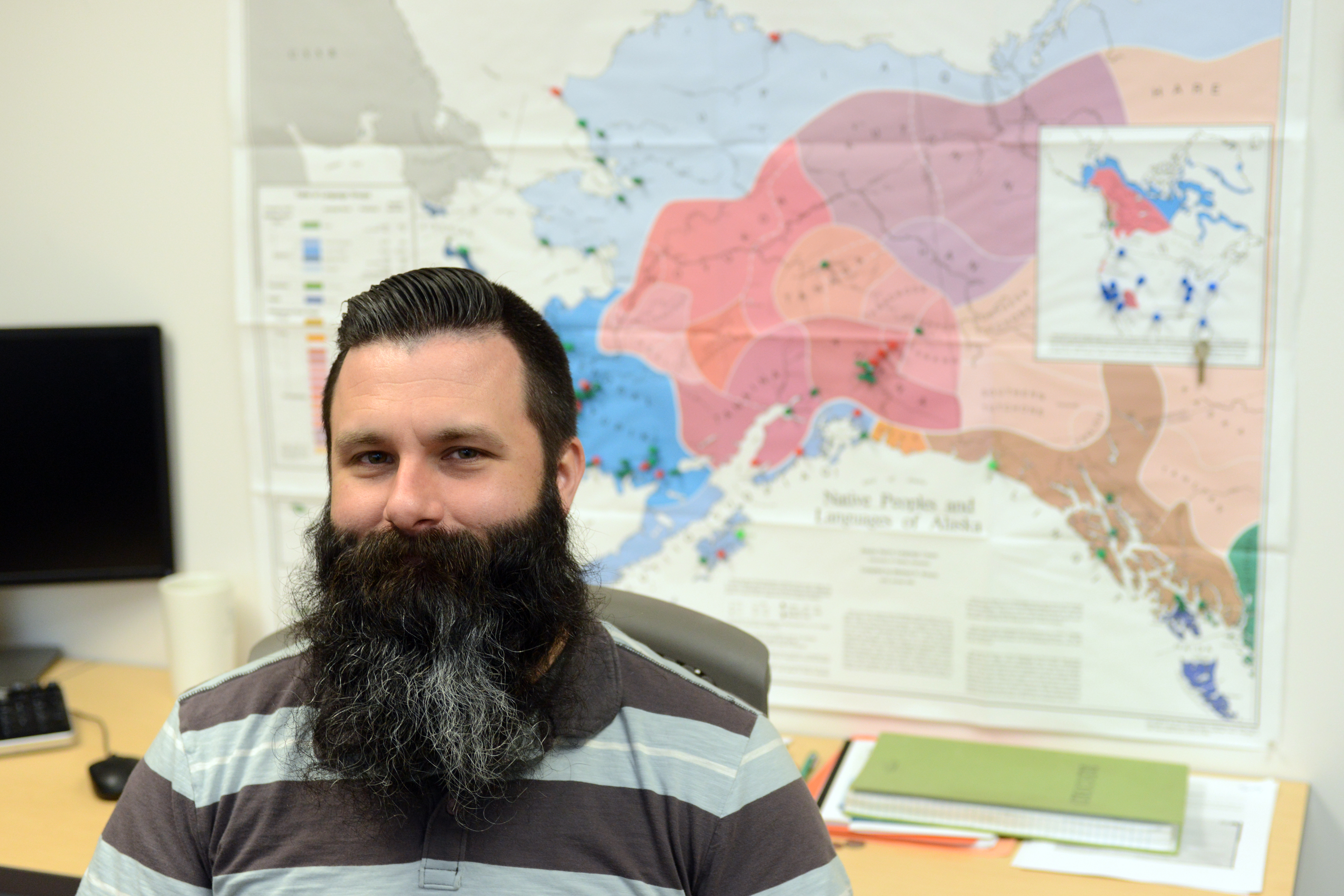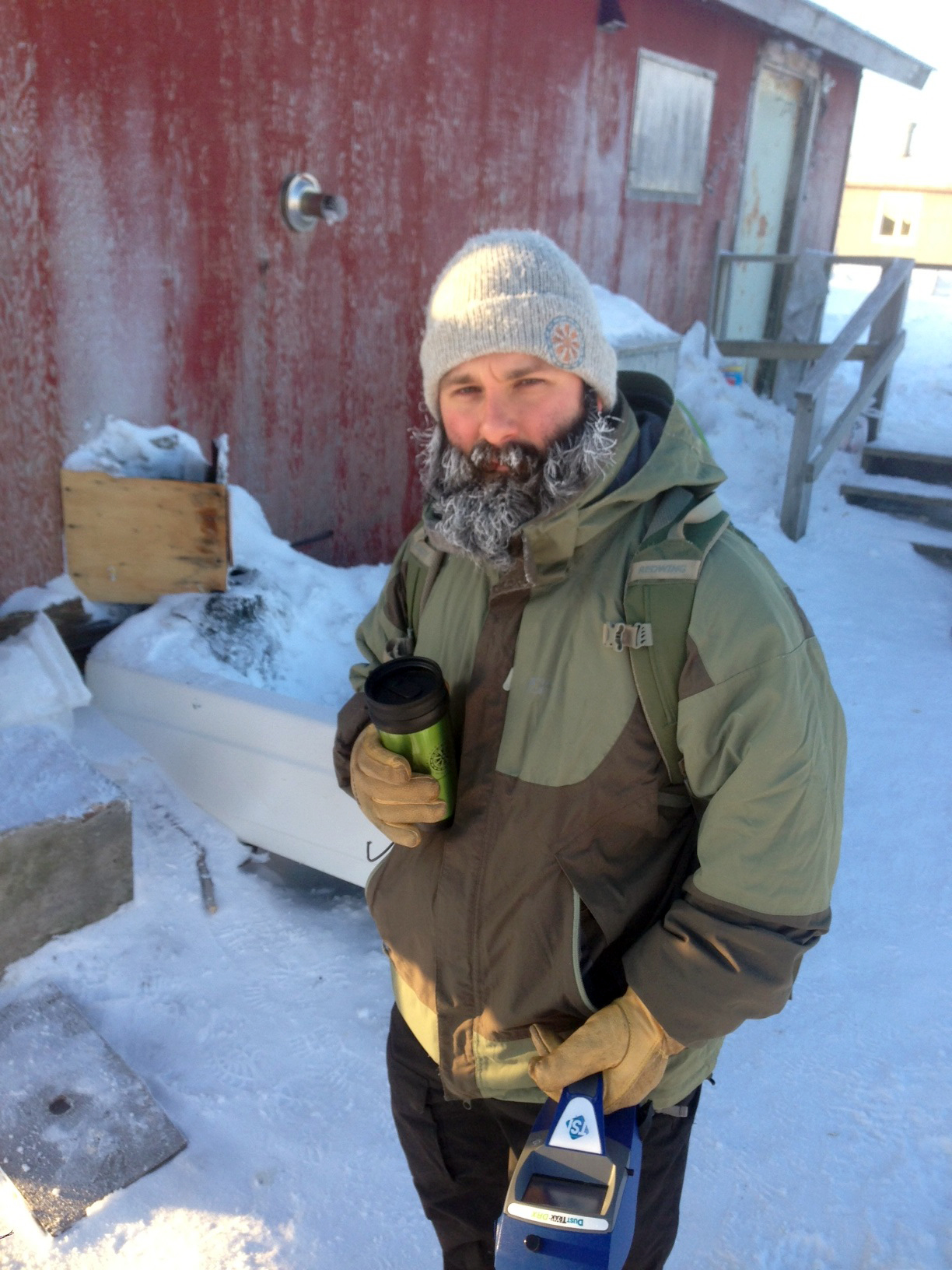Unhealthy air in rural Alaska homes targeted in tribal program
They were called “frequent flyers,” children flown from their village homes to the hospital in Anchorage for treatment for coughs, wheezes and trouble breathing, then sent back home — only to return again with the same symptoms.
A.J. Salkoski, a senior program manager at the Alaska Native Tribal Health Consortium in Anchorage, described the phrase and the observations behind it.

But those symptoms were nothing new to Rosalyn Singleton, a pediatrician who, for almost 30 years, has worked on respiratory diseases from her office at the health consortium. For years she studied bronchiectasis in Alaska Native youths, a chronic lung disease so rare in the developed world that it has earned the “orphan disease” tag. But it is prevalent enough in Alaska that Singleton wanted to find a way to prevent it or cure it.
Now researchers have found that the air in many of the houses in villages may be at least partly to blame.
Bronchiectasis usually occurs when a previous disease like pneumonia causes damage to the airways and reduces lung function. It can lead to lung infections and respiratory and heart failure.
The disease’s link to pneumonia is particularly pertinent to rural Alaska communities: An analysis of data from 2009 to 2011 published two years ago found that infants in the Yukon-Kuskokwim Delta region have a pneumonia hospitalization rate 10 times higher than the general U.S. infant population. According to Singleton, a co-author of that study, 58 percent of children in the Y-K Delta region had pneumonia.
“I spent the first part of my career getting all this data,” Singleton said in an interview. “Then I spent the rest of my career trying to figure out what I can do to help.”
Healthy Homes
In 2010, ANTHC launched the Healthy Homes Program with an initial grant from the North American Agreement on Environmental Cooperation, a U.S., Canada and Mexico treaty associated with the North American Free Trade Agreement. Additional funding came from the Environmental Protection Agency and the U.S. Department of Housing and Urban Development. ANTHC declined to disclose the exact amount of funding from each source.
In the winter of 2011, Salkoski and his team visited about 60 homes in eight Southwest Alaska villages that housed one or more children with severe or chronic lung disease.
Of these children, 68 percent had been hospitalized for respiratory illness before age 2. Other children living in the same households had high rates of respiratory hospitalization before they were 2 years old too — a good indicator, according to Singleton, that the illnesses were influenced by household conditions.
First findings
The study first focused on in-home air quality and whether that correlated to respiratory illnesses.
In the homes studied, researchers found high levels of human overcrowding compared to the general U.S. population, as well as a high number of households with at least one tobacco smoker. Sixteen percent of the homes had a wood stove as the primary heat source, and 60 percent had no running water or plumbed sewer.
Singleton said that having clean running water is one of the most important preventive measures for reducing illnesses like pneumonia.
The researchers also found that the homes were frequently used as workshops where small engines from snowmachines and fuel were stored. This was more of a practicality, said Salkoski, as the readings were conducted during the winter.

“If it’s negative 30 outside and your only mode of transportation is broken down in front of your house … we have to find strategies to make it work,” Salkoski said.
The team then analyzed data coming from monitors placed inside the homes’ living rooms, which included relative humidity, carbon dioxide, the level of small particulates and volatile organic compounds like common components of gasoline.
Taken together, these measures “were the best indicators of indoor air quality and health risk and were most likely to be impacted by home intervention activities,” the study said.
The median level of small particles in the homes exceeded the recommended cutoff. These particulates, measuring 1/20th the width of a hair, can come from wood smoke and are particularly harmful because they can travel deep into the lungs and cause irritation.
All of the homes had detectable levels of volatile organic compounds including benzene, a known carcinogen, toluene, ethylbenzene and xylene — chemicals from petroleum known as BTEX. Twenty-three percent of the homes exceeded the minimum risk level for benzene recommended by a federal public health agency based in Atlanta.
During the first year of the study, some carbon dioxide monitors were registering such high readings that the researchers thought they were broken. After they tested the monitors, they realized that the devices were not faulty; their measuring capacity simply didn’t go as high as the observed carbon dioxide in the houses.
“We called the manufacturer and they told us that you couldn’t get CO2 levels in a house as high as we were seeing,” Salkoski said. “We were like, ‘Well, I guess we can, I guess we’re going to get a new monitor.’ ”
High carbon dioxide levels point to little ventilation and high crowding, which means that many harmful elements stay in the air.
When looking at these environmental factors and the health conditions of children living in the homes, the researchers found that higher BTEX levels were associated with a higher risk for wheezing and coughing between colds and an asthma diagnosis. Households with a smoker, primary wood heat and more small particulates in the air were also associated with increased odds of developing a cough between colds.
Small fixes
After the initial readings, the Healthy Homes team, with help from village housing authorities, launched a series of low-cost, easy projects to help improve air quality in the study homes in January 2012.
These included installing carbon monoxide detectors, new cooking stoves and air vents, and replacing some wood stoves with cleaner-burning ones certified by the EPA. The team also provided educational sessions that emphasized simple measures to improve air quality, like smoking outside and leaving contaminates out of the home.
The study authors plan to publish the results of the improvements in a scientific article currently undergoing peer review. But preliminary findings suggest they are working. The amount of particulates in the homes after improvements decreased 21 percent, while levels of carbon dioxide and volatile organic compounds decreased 26 percent and 68 percent.
There were seven hospitalizations for respiratory issues the two weeks before home improvements; that number dropped to zero over the two weeks after. Families of the children said that visits to clinics dropped by half, and 27 percent fewer school days were missed.
“This is one of those cases where you actually get to see the merits of your work, which is not often the case in the environmental health world,” Salkoski said.
Now, a pilot program is underway to identify children hospitalized at Alaska Native Medical Center with severe respiratory infections and offer their families environmental health consultations during their stay. After explaining potential risks, the village housing authority in the region will then work to increase ventilation and improve air quality in the homes.
Families will also receive a toolkit that includes cleaning solution and towels, a carbon monoxide detector if they don’t already have one, and tip sheets and instructions on best wood-burning practices.
With these changes, Salkoski said, the families will be prepared if they move into new housing.
“This gives residents an opportunity to practice best-burning practices and not bringing contaminates into the home, that kind of stuff, before they get into that new house,” Salkoski said. “Then we can keep the living environment better from the very beginning of the lifetime of that house.”